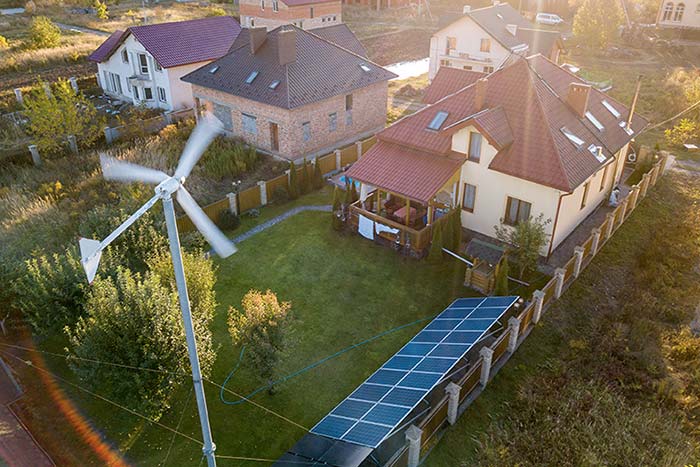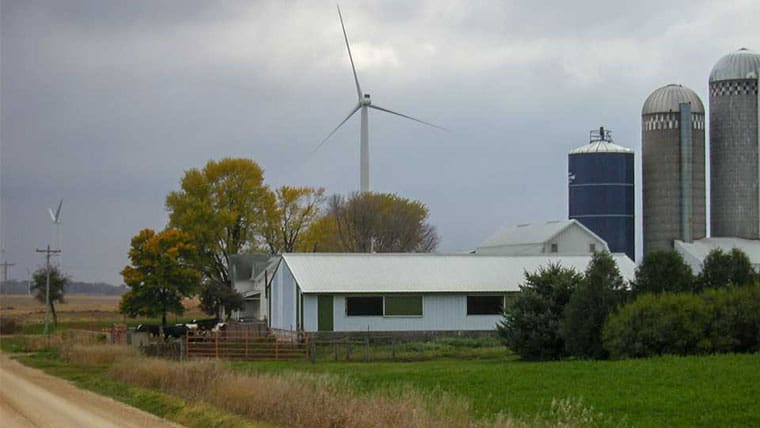
In today's environmentally conscious world, businesses are increasingly seeking ways to reduce waste and promote sustainability.
This article explores the top 10 strategies for effective reuse and recycling in the office, providing a thorough and analytical analysis of solutions that can be implemented.
From paper recycling to energy-saving practices, these strategies offer practical and actionable steps for businesses of all sizes to embrace a greener approach.
Join us as we delve into these innovative solutions that empower organizations to make a positive impact on the environment.
Paper Recycling
The paper recycling process is an essential component of an effective office recycling strategy. Not only does it help minimize the environmental impact of paper waste, but it also contributes to the conservation of natural resources.
One of the key benefits of paper recycling is the reduction in water usage. By recycling paper, we can save significant amounts of water that would otherwise be needed for the production of new paper.
Additionally, electronic waste management plays a crucial role in office recycling efforts. Many offices rely heavily on electronic devices, and proper disposal and recycling of these devices are essential to prevent hazardous materials from entering the environment.

Implementing a comprehensive electronic waste management program is vital for a sustainable office recycling strategy.
Ink Cartridge Refilling
Implementing ink cartridge refilling is a practical and eco-friendly solution that continues the commitment to effective reuse and recycling in the office. By refilling ink cartridges, businesses can significantly reduce waste and promote sustainable printing practices.
Here are three reasons why ink cartridge refilling should be considered:
- Cost-effective: Refilling ink cartridges is much cheaper than buying new ones. This can save businesses a significant amount of money in the long run, especially for offices that require frequent printing.
- Environmental benefits: Ink cartridges are made from non-biodegradable materials, and improper disposal contributes to landfill waste. Refilling cartridges reduces the demand for new ones, conserving resources and reducing carbon emissions associated with manufacturing and transportation.
- Quality printing: Refilled ink cartridges can produce high-quality prints comparable to new cartridges. This ensures that businesses can maintain their printing standards while minimizing their environmental impact.
Old Equipment Donation
To further promote sustainability in the office, incorporating the donation of old equipment is a practical way to extend the commitment to effective reuse and recycling.
Old equipment recycling and e-waste management are crucial aspects of a responsible and environmentally-conscious office. Many businesses upgrade their technology frequently, leading to a surplus of outdated equipment.
Instead of disposing of this equipment, donating it to organizations or individuals in need can be a win-win solution. By donating old equipment, offices can reduce electronic waste, extend the lifespan of the equipment, and provide valuable resources to those who may not have access to it.
Additionally, donating old equipment helps reduce the environmental impact of manufacturing new products. This strategy allows offices to contribute to a more circular economy by promoting the reuse of resources and minimizing waste.

Reusable Utensils
Reusable utensils offer a sustainable alternative to single-use plastic cutlery in the office. By incorporating reusable utensils, companies can significantly reduce their waste and contribute to a more environmentally friendly workplace.
Here are three strategies to promote the use of reusable utensils in the office:
- Provide reusable utensils: Supply employees with reusable cutlery sets that they can keep at their desks or take with them to the office cafeteria. This eliminates the need for disposable plastic utensils and encourages employees to make sustainable choices.
- Encourage employees to bring their own: Encourage employees to bring their own reusable utensils from home. This not only reduces waste but also gives employees the freedom to choose utensils that they are comfortable using.
- Use reusable containers: Alongside reusable utensils, encourage employees to use reusable containers for their meals. This further reduces waste by eliminating the need for single-use plastic containers and packaging.
Green Purchasing
Green purchasing is an essential strategy for promoting sustainability in the office. By buying eco-friendly products, companies can reduce their environmental impact and contribute to a greener future.
Sustainable purchasing not only benefits the environment but also enhances the company's reputation and can lead to cost savings in the long run.
Buying Eco-Friendly Products
One key strategy for promoting sustainability in the office is through the purchase of environmentally conscious products. By making eco-friendly choices when selecting office supplies and equipment, businesses can significantly reduce their environmental footprint. Here are three important considerations when buying eco-friendly products:
- Eco-friendly packaging: Opt for products that are packaged using sustainable materials such as recycled paper or biodegradable materials. Avoid excessive packaging and choose items that are minimally packaged whenever possible.
- Sustainable sourcing: Look for products that are sourced responsibly, such as those made from renewable resources or produced using eco-friendly manufacturing processes. This includes selecting products made from recycled materials or those that have been certified by recognized sustainability organizations.
- Energy efficiency: Choose office equipment and appliances that are energy-efficient and have a low impact on the environment. Look for products with Energy Star certification or those that have been designed to reduce energy consumption.
Benefits of Sustainable Purchasing
The benefits of sustainable purchasing in the office are numerous and impactful. By adopting sustainable purchasing practices, businesses can contribute to a greener environment and reduce their ecological footprint.
One of the key benefits is the use of sustainable packaging, which minimizes waste and promotes recycling. Green supply chain management ensures that products are sourced from environmentally responsible suppliers, reducing the negative impact on natural resources.

Sustainable purchasing also encourages the use of recycled materials, which reduces the need for virgin resources and saves energy. Additionally, it promotes the use of eco-friendly products that have a lower impact on the environment throughout their lifecycle.
Waste Management
Effective waste management is crucial in promoting sustainability and reducing the environmental impact of office operations.
To minimize paper waste, offices can implement strategies such as double-sided printing, digital document storage, and paperless communication.
Proper disposal methods, such as segregating recyclable and non-recyclable waste, should be encouraged.
Promoting a recycling culture can be achieved through awareness campaigns, providing recycling bins, and incentivizing employees to actively participate in recycling initiatives.
Minimizing Paper Waste
To reduce paper waste in the office, implementing strategies for efficient paper usage is crucial. Here are three techniques that can help minimize paper waste and promote digitalization:
- Go digital: Encourage employees to embrace digital alternatives for communication and document storage. Utilize email, cloud storage, and online collaboration tools to reduce the need for printing and physical paper documents.
- Print only when necessary: Encourage employees to think twice before hitting the print button. Encourage them to review documents digitally or use electronic signatures instead of printing and scanning.
- Implement paper-saving practices: Set default printer settings to double-sided printing, use smaller font sizes, and reduce margins to fit more content on each page. Additionally, establish paper recycling bins throughout the office to ensure proper disposal and recycling of paper waste.
Proper Disposal Methods
Proper disposal of office waste is essential for maintaining a clean and environmentally responsible workspace. One effective method is waste segregation, which involves separating different types of waste for appropriate disposal. This can include segregating paper waste from plastic or electronic waste. Implementing a waste segregation system in the office can help reduce contamination and increase the amount of waste that can be recycled or reused.

Another important aspect of proper disposal is electronic recycling. Electronic devices contain hazardous materials that can harm the environment if not disposed of correctly. Recycling electronic waste ensures that valuable resources are recovered and harmful substances are safely managed. Many electronic manufacturers and recycling companies offer programs to collect and recycle electronic waste, making it easier for businesses to dispose of old or broken devices responsibly.
Offices can foster a culture of recycling by actively encouraging and promoting responsible waste management practices. Here are three strategies to promote recycling awareness and encourage participation:
- Education and Training: Conduct workshops and training sessions to educate employees on the importance of recycling and proper waste disposal. Provide information on what can and cannot be recycled, as well as the benefits of recycling for the environment.
- Clear Communication: Install clear signage and labels to guide employees on where to dispose of different types of waste. Use visual cues to make recycling stations easily identifiable and accessible. Regularly communicate recycling goals and achievements to keep employees engaged and motivated.
- Incentives and Rewards: Introduce a rewards program to incentivize employees to participate in recycling initiatives. Recognize and reward individuals or teams who consistently contribute to waste reduction efforts. This not only encourages active participation but also creates a sense of pride and camaraderie among employees.
Furniture Upcycling
One effective strategy for office sustainability is implementing furniture upcycling techniques. Furniture upcycling refers to the process of transforming old or discarded furniture into new and improved pieces that have both aesthetic and functional value.
This practice offers several benefits for office sustainability. Firstly, it reduces waste by giving a new life to old furniture instead of sending it to landfills. Secondly, it promotes resource conservation by minimizing the need for new raw materials.
Additionally, furniture upcycling allows for creative expression and customization, as it encourages employees to participate in creative upcycling projects that reflect their personal style.
Composting
Composting is an effective and sustainable way to reduce office waste and contribute to a healthier environment. By composting organic materials such as food scraps and plant waste, businesses can divert waste from landfills and create nutrient-rich soil for gardening and landscaping.
To successfully implement composting in the office, beginners can start by educating employees about the benefits of composting and providing them with simple tips on how to properly compost.

Benefits of Composting
Implementing composting in the office provides numerous benefits for the environment and promotes sustainable waste management practices. Here are three key reasons why composting is beneficial:
- Reduces landfill waste: Composting diverts organic waste, such as food scraps and yard trimmings, from ending up in landfills. Landfills are a significant source of greenhouse gas emissions, contributing to climate change. By composting, organic waste can decompose naturally, reducing the amount of waste that goes to landfills.
- Soil enrichment: Compost is a nutrient-rich soil amendment that can improve soil quality and fertility. When compost is added to gardens and landscapes, it enriches the soil by providing essential nutrients, improving water retention, and promoting healthy plant growth. It also reduces the need for chemical fertilizers, which can have harmful environmental impacts.
- Cost savings: Composting can help businesses reduce waste disposal costs. By diverting organic waste from traditional waste streams, businesses can potentially reduce the frequency of waste pickups and associated fees. Additionally, composting can be used as a cost-effective alternative to purchasing commercial fertilizers or soil amendments.
To implement composting in the office, consider providing compost bins, educating employees about what can and cannot be composted, and establishing a regular collection and composting routine. By incorporating composting practices, offices can contribute to a healthier environment while saving money in the long run.
Composting Tips for Beginners
To start composting successfully in the office, beginners should prioritize proper waste segregation and compost bin placement.
Composting is an effective technique for reducing waste and promoting sustainability in the workplace. By separating organic waste such as food scraps, coffee grounds, and paper products, employees can contribute to the creation of nutrient-rich compost that can be used to enrich soil and promote plant growth.
To ensure successful composting, beginners should follow a few key techniques. First, they should aim for an equal balance of green (nitrogen-rich) and brown (carbon-rich) materials in their compost bin. This can include a combination of food scraps, yard waste, and shredded paper.
Second, beginners should regularly turn or mix the compost to help facilitate decomposition and prevent odors.
Lastly, it is important to maintain proper moisture levels and provide adequate ventilation to ensure that the composting process is efficient and effective.

Energy Saving
By optimizing energy usage, offices can significantly reduce their environmental impact and operational costs. Implementing energy-saving strategies not only helps conserve resources but also promotes a more sustainable workplace.
Here are three effective ways offices can save energy:
- Switch to energy-efficient lighting: Replace traditional incandescent bulbs with energy-saving alternatives such as LED or CFL bulbs. These lighting options use less electricity and have a longer lifespan, reducing the need for frequent replacements.
- Implement power management: Encourage employees to utilize power-saving features on their computers and other office equipment. Set computers to enter sleep mode after a certain period of inactivity and enable power-saving settings on printers and copiers.
- Install motion sensors: Install motion-activated sensors in common areas such as hallways, conference rooms, and bathrooms. These sensors detect movement and automatically turn lights on or off, ensuring that lights are only in use when needed.
Carpooling
One effective strategy for reducing transportation emissions and promoting a more sustainable workplace is through the implementation of carpooling initiatives. Carpooling, also known as car-sharing, is the practice of sharing a single vehicle with multiple passengers who are traveling in the same direction. By encouraging employees to carpool, businesses can significantly reduce the number of cars on the road, resulting in reduced traffic congestion and lower greenhouse gas emissions.
There are several benefits of carpooling in the workplace. Firstly, it reduces the carbon footprint of employees by decreasing the number of vehicles on the road. Secondly, it helps to alleviate parking congestion, creating a more efficient use of parking spaces. Additionally, carpooling can lead to cost savings for employees by reducing fuel and maintenance expenses.
To encourage carpooling, businesses should consider implementing the following tips: establish a carpooling program, provide incentives such as preferred parking spots or financial rewards, and use technology platforms to facilitate ride-sharing arrangements among employees.
Ultimately, by promoting carpooling initiatives, businesses can contribute to a more sustainable future while also providing their employees with cost-saving transportation options.
Frequently Asked Questions
How Do I Properly Dispose of Electronic Waste Such as Old Computers and Printers in the Office?
Proper electronic waste disposal in the office involves responsible e-waste recycling. Old computers and printers should not be thrown in regular trash. Instead, they should be recycled through certified e-waste recycling programs to minimize environmental impact and promote sustainability.

Are There Any Regulations or Guidelines That Need to Be Followed When Implementing a Composting Program in the Office?
When implementing a composting program in the office, it is important to adhere to relevant regulations and guidelines. This ensures proper waste management and environmental sustainability. However, challenges may arise, such as space constraints and employee participation. Despite these challenges, the benefits of a composting program include reduced waste, improved soil health, and a positive company image.
What Are Some Ways to Encourage Employees to Participate in Carpooling or Alternative Transportation Options?
To encourage employee participation in carpooling or alternative transportation options, organizations can implement incentives such as preferred parking for carpoolers, providing subsidies for public transportation, and promoting the environmental and cost-saving benefits of these options.
Is There a Specific Energy-Saving Plan or Strategy That Can Be Implemented in the Office to Reduce Energy Consumption?
To reduce energy consumption in the office, implementing energy efficient lighting and smart power management strategies are essential. These measures can significantly decrease energy usage, resulting in cost savings and a more sustainable workplace environment.
Are There Any Specific Criteria or Certifications to Look for When Purchasing Green or Eco-Friendly Office Supplies and Equipment?
When purchasing green or eco-friendly office supplies and equipment, it is important to look for specific criteria and certifications such as eco label certifications and sustainable purchasing guidelines to ensure their environmental sustainability and minimize negative impact on the planet.